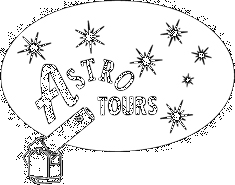.05
TELESCOPES AND BINOCULARS
WHAT SORT OF TELESCOPE WILL I BUY?
How well do you know the sky?
Not very well is often the answer.
Buy a pair of binoculars and a star chart and start to learn your way around the sky is my best advice.
Or, you can skip this step and go straight to a computer controlled telescope.
WHAT SORT OF BINOCULARS WILL I BUY?
Binoculars are awesome for every part of your life and when you point them at the sky they will show you hundreds more stars than you can see with the naked eye. They will bring the craters on the moon to life, they will show you the moons of Jupiter and they will reveal many beautiful star clusters and formations that are only a hazy blur with the naked eye. Who knew that the Milky Way is just lots and lots of stars? If you do buy a telescope, you will still need a pair of binoculars to find the things you want to point your telescope at. Binoculars are a joy in their own right! They are my favourite way to look at the night sky, apart from simply lying on my back with nothing at all.
10 X 50, 8 X 42, 20 X 60?
Binoculars have 2 numbers, like 10 x 50. 10 is the magnification and 50 is the aperture of the front lens in mm. For hand holding you want no more than 10 times magnification. Even better is 8 times. Everybody wants the highest maginification because more is more, right? More magnification means more shake and harder to use.
10 x 50s are ideal for astronomy and everything else in your life. I prefer 8 x 42s because they are that much lighter and smaller to travel with. Small birdwatching binos of 25mm aperture are unsuitable for stargazing as they simply don't have the light gathering power.
HOW MUCH TO SPEND?
You can get a pair of binoculars for $100 and you will get $100 worth. Or you can spend a couple of thousand dollars and get awesome value in terms of the incredible quality you will see. Remember, you might only buy one pair of binoculars in your life, so it is worth making them a real pleasure to use. Somewhere in the middle at around 4 to $500 will get you something waterproof, dustproof and drop proof. Spend a little more and you will also increase your joy. Yes, it does make that much difference!
OK, SO YOU ARE READY FOR A TELESCOPE.
Binoculars will get you started and put a vital astronomical tool in your hands for getting the best out of your telescope. However, they won't show you much detail on the planets and they will only tease you to want more when you come across a spectacular Globular Cluster with them.
DOBSONIAN TELESCOPES
Dobsonian’s use a simple and easy to use mounting so that you can spend more on the telescope itself. That gets you into a semi serious telescope for not very much money. We have Skywatcher 5 inch Dobsonians for $399. These will fit in a cupboard in your caravan. A 6 inch for $499 needs a bit more room and an 8 inch for $729 will go on the back seat of your car. We've got them up to 20 inches diameter at Astro Tours where you can try them out. For a few more $s, the collapsible versions will easily pack in your car and if you’re serious we’ll set you up with the full SYNSCAN GOTO tracking package programmed with 42 900 objects with the 8 inch version at $1899. To order, send me an email.
REFRACTORS
These are your classic look through telecopes using lenses. Some of the cheaper ones need chucking over the back fence so buyer beware. Spend a little extra money though and you will have years of joy. Here's ones of my favourite Skywatcher 102mm refractor on a very easy to use Alt Azimuth mount for $799. The same scope on a different mount is $549. Again, you can spend a lot more and maybe a little less. Again, you might only buy one, so make sure it is one you can actually use!
PHOTOGRAPHY
Astro photography requires an equatorial telescope mounting so that time exposures can be shot while the sky is 'tracked' by the camera and the telescope. This usually means learning a little more about how to set such a mounting up so that it is in alignment with the earth's axis. Having said this, in todays age, a computer will often handle this tricky stuff. The tricky stuff about computers though, is that they are computers.
HOW BIG? AND HOW MUCH?
While cheap telescope brands will brag about how much their rubbish telescope magnifies, this is the least important aspect of a telescope. The most important aspect is the size, in mm or inches, of the light gathering aperture. It is very easy to vary the magnification with different sized, or focal lengt eyepieces, which simply slide in and out of your focuser.
While bigger is better with telescopes, it also makes them more difficult to use and to set up. That's why I am leaning more and more to a simple grab and go telescope such as the 102mm refractor linked above. Having said that I love my big dobsonians too for their sheer light gathering power.

